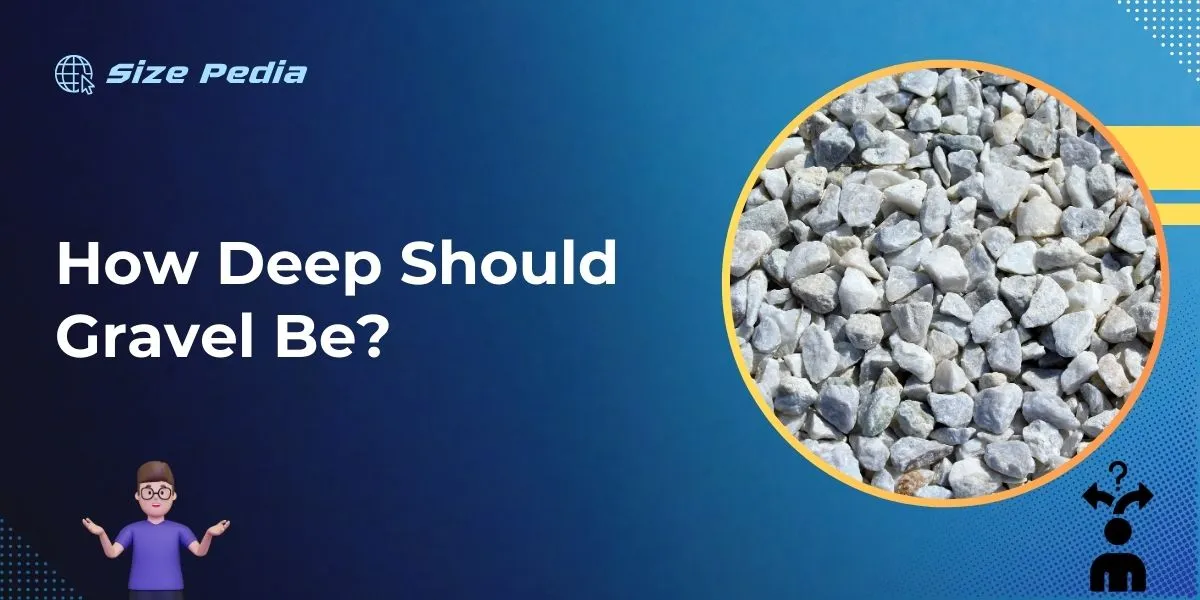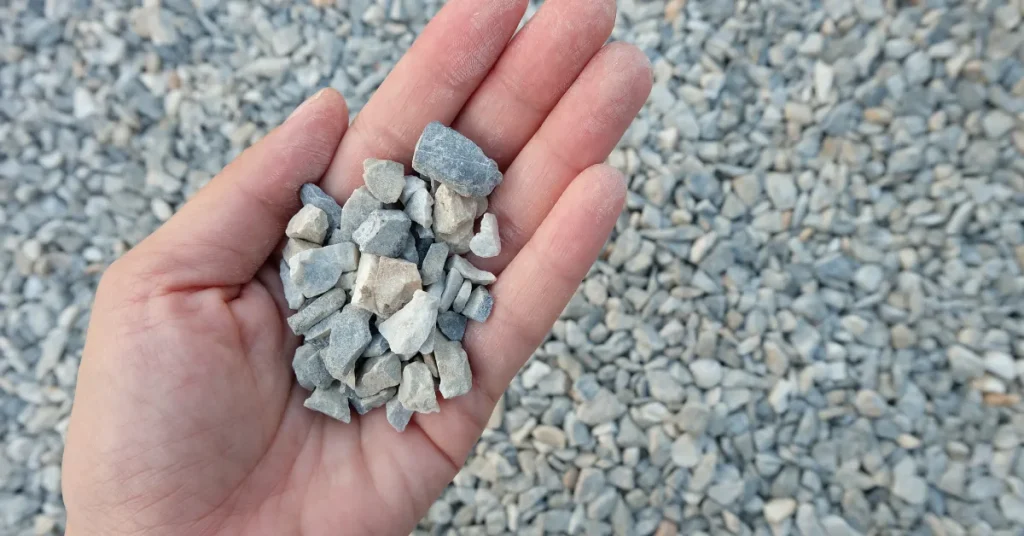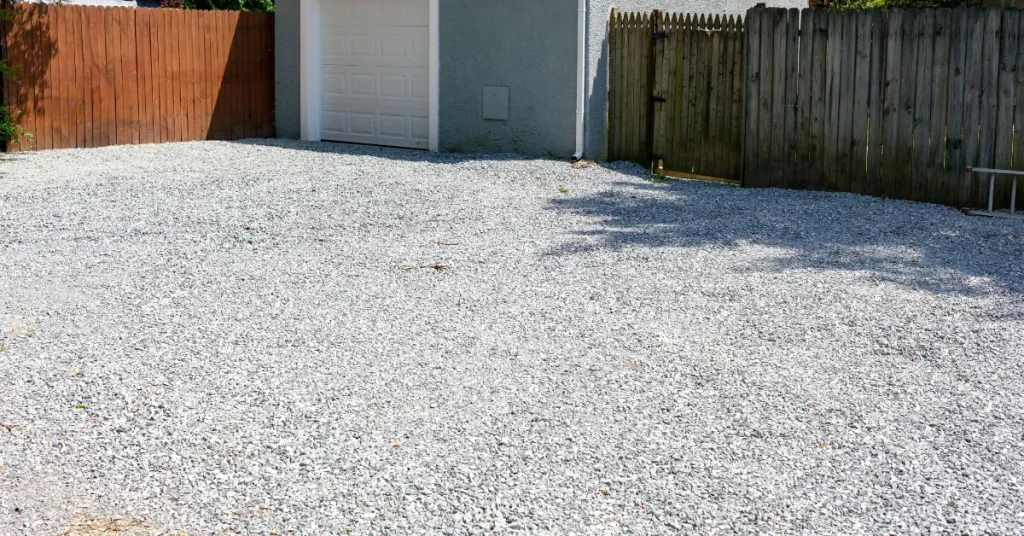Gravel depth should be approximately 4-6 inches for driveways and 2-3 inches for pathways. It ensures stability and proper drainage.
Selecting the proper depth for gravel is crucial in any landscaping or construction project. Incorrect gravel depth can lead to water pooling, weed growth, and insufficient support for vehicles or foot traffic.
Gardeners, homeowners, and construction workers alike must understand this key aspect of project preparation.
Achieving the right balance provides a stable base, enhances aesthetic appeal, and extends the longevity of the surface.
Whether laying a walkway, creating a decorative garden feature, or setting up a robust driveway, starting with the correct gravel depth creates a foundation for success.
Gravel depth influences the outcome and functionality of your outdoor space, making it an essential aspect of the planning process.

Decoding The Role Of Gravel
Gravel is more than just stones on the ground. It serves many purposes. Gravel is key for strong foundations and drainage. Let’s explore gravel’s uses in our gardens and buildings.
Gravel Functions In Landscaping And Construction
Why do we use gravel? Gravel has many jobs. In your garden or a big construction site, gravel works hard.
- Drainage: Water moves easily through gravel.
- Stability: Buildings and paths stay level and safe.
- Aesthetic: Gravel makes spaces look neat and natural.
The Importance Of Gravel Depth
How deep should gravel be? The depth changes with the job it does. Here are some common examples:
| Use | Depth |
| Paths | 50mm |
| Driveways | 100-150mm |
| Drainage | 100-300mm |
| Garden Beds | 30-50mm |
Deep enough gravel stops weeds. It also keeps moisture in the ground. For strong buildings, the right depth keeps the base secure.
Choosing The Right Gravel For Your Project
Got a garden path, driveway, or landscape project? Picking the right gravel is a must. The gravel you choose sets the tone for your space. It needs to meet both aesthetic and functional needs. Let’s dive into choosing the best gravel for you.
Types Of Gravel And Their Best Uses
Different projects call for different types of gravel. Here’s a quick rundown:
- Pea Gravel: Small and smooth, ideal for walkways and pet areas.
- Crushed Stone: Sharp edges make it perfect for driveways and paths.
- Quarry Process: Mixed with stone dust for a solid base, great under asphalt and concrete.
- River Rock: Round and polished, river rock suits garden beds and decorative features.
Evaluating Gravel Size And Shape
Gravel size and shape matter a lot. They affect how it looks and works. Think about your project’s needs.
| Gravel Size | Best For |
| Fine Gravel | Patios and walkways |
| Medium Gravel | Driveways and garden paths |
| Large Gravel | Drainage and accents |
Consider the shape too. Angular gravel locks together well for driveways. Rounded gravel works for decoration and drainage.
Calculating Gravel Depth

When tackling any landscaping or construction project, understanding precisely how deep gravel should be is critical. Whether filling a walkway, setting up a driveway or creating drainage, calculating the correct gravel depth ensures the project’s success.
This part of the post will guide you through the essential steps to determine the ideal depth of gravel for your specific project.
Basic Guidelines For Common Projects
- Walkways: Generally, a depth of about 4 inches is suitable.
- Driveways: Heavy-duty driveways benefit from 6 to 8 inches.
- Patios: For a stable base, aim for a gravel depth of about 4 inches.
- French drains: A minimum of 8 inches is essential for adequate drainage.
To begin, identify the specific usage of your gravel project. Here is a simple reference table to get you started:
| Project Type | Recommended Depth |
| Pathway | 3-4 inches |
| Driveway | 6-8 inches |
| Patio Base | 4-6 inches |
| Landscape Decor | 2-3 inches |
Each type of project has a recommended gravel depth for optimal performance and longevity. A walkway does not need as much depth as a driveway, which must support heavier loads. Take your project’s purpose into account before proceeding.
Tools For Precise Measurement
- A measuring tape to determine dimensions.
- Use a depth gauge or a stick to measure depth consistency.
- A calculator helps in estimating the total volume required.
Gathering precise measurements is a must for ordering the right amount of gravel. To calculate the overall volume of gravel needed, measure the length and width of the area. Multiply these dimensions with the desired depth to get the cubic footage.
Remember to convert this volume to cubic yards if purchasing gravel by the yard, as gravel is often sold in larger quantities. Utilizing the right tools not only simplifies the process but also ensures that you purchase neither too much nor too little gravel.
Layering Techniques For Optimal Stability
Setting the proper foundation with gravel is key to a stable surface. Whether you’re prepping for a patio, driveway, or garden path, the right layering techniques can mean the difference between a surface.
It’s not about piling on as much gravel as you can. It’s about precise distribution and packing to reach that sweet spot of durability.
Step-by-step Layering Process
- Measure the Area: Determine the project’s dimensions. This helps calculate gravel needs.
- Excavate Soil: Dig up to 8-12 inches for patios or walkways.
- Compact the Ground: A hand tamper or plate compactor will do.
- Add Base Layer: Use larger crushed stone for the initial layer.
- Compact the Base: Ensure a stable lower tier before adding more layers.
- Middle Layer: Slightly smaller stones go over the base.
- Compact Again: Every layer gets compacted for solidity.
- Top Layer: Finer gravel finishes off the layering.
- Final Compact: Make a smooth, flat surface with this last compact.
Tips For Ensuring Longevity
- Select Quality Materials: Good gravel resists weather and pressure.
- Drainage Planning: Water should flow off, not through the gravel.
- Regular Maintenance: Rake gravel to prevent grooves or dips.
- Right Tools: Use landscape fabric to deter weeds and enhance stability.
- Replenish as Needed: Add fresh gravel to keep the surface level.
Common Pitfalls And How To Avoid Them
Common pitfalls often deter a perfect gravel installation. This section details mistakes to dodge for an ideal outcome. Understanding how deep your gravel should be sets the foundation right. Keep in mind these tips to prevent common errors.
Overestimating The Amount Of Gravel Needed
One frequent misstep is buying too much gravel. Calculating the exact quantity needed can be tricky.
- Measure your space’s length, width, and depth in feet.
- Multiply these figures to find the cubic feet.
- Convert cubic feet to cubic yards by dividing by 27 (since one cubic yard equals 27 cubic feet).
For accuracy, use an online gravel calculator. This tool eliminates guesswork and saves money.
Underscoring Compaction And Drainage
Ignoring compaction and drainage can spell disaster for gravel projects.
| Issue | Impact | Solution |
| Compaction | Gravel compresses over time, reducing depth. | Add 10-15% more depth to your initial measurement to compensate for future compaction. |
| Drainage | Poor drainage could result in pooling water and erosion. | Ensure a proper base layer of sand or crushed stone. This layer should be at least 4 inches for effective drainage. |
Layer your gravel correctly and prevent issues down the line.
Long-term Gravel Maintenance

Gravel surfaces provide a rustic, flexible, and economical option for outdoor spaces. Proper maintenance ensures a long-lasting and aesthetically pleasing gravel area. Understanding how to care for gravel over the years is key to its longevity.
Regular Upkeep Practices
Keeping gravel in top condition demands consistent attention. Here are effective strategies:
- Rake regularly to even out the surface.
- Remove leaves and debris to prevent organic matter build-up.
- Check for weeds and remove them promptly.
- Tighten and compact gravel regularly to maintain a solid base.
When To Refresh Gravel Layers
Over time, gravel can sink, disperse, and become compacted. Recognize the signs that it’s time for a refresh:
| Sign | Action Required |
| Bare spots | Add more gravel and level the surface. |
| Thin gravel | Top up with a fresh layer. |
| Visible weed growth | Remove weeds and apply a weed barrier if needed. |
Typically, refreshing gravel is necessary every 1 to 5 years. This timing can vary based on traffic levels and local conditions.
FAQs About How Deep Should Gravel Be
What Is The Ideal Depth For Gravel?
The ideal depth for gravel varies depending on its use. For pathways or driveways, a layer of about 4 to 6 inches is usually sufficient. For proper support and stability, make sure to compact the gravel properly.
Does Gravel Depth Affect Drainage?
Yes, gravel depth can significantly affect drainage. A depth of about 8 to 12 inches is recommended for areas needing good drainage, such as foundations or French drains, to prevent water buildup and to encourage proper water flow.
How Much Gravel Do I Need?
Determining gravel needs requires the dimensions of your project area. Multiply the length, width, and desired depth of the area to calculate cubic yards or feet of gravel required. Use an online gravel calculator for an accurate estimate.
Is Thicker Gravel Better For Stability?
Thicker gravel isn’t necessarily better for stability. It depends on the application. For driveways, a well-compacted gravel base of 4 to 6 inches is usually stable enough. For high traffic or load-bearing areas, more depth may be beneficial.
Conclusion
Determining the correct depth for gravel is essential for any landscaping or construction project. This guide outlined key factors to consider, from drainage to the type of gravel. Remember, consistency is key for stability and aesthetic appeal.
For best results, consult with a professional before starting your project, ensuring your gravel depth meets specific needs and yields a lasting outcome.
Resources:
1. https://www.blm.gov/programs/aquatic-resources/alaska/gravel-gravel-keystone-initiative
